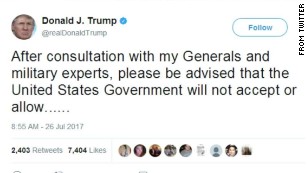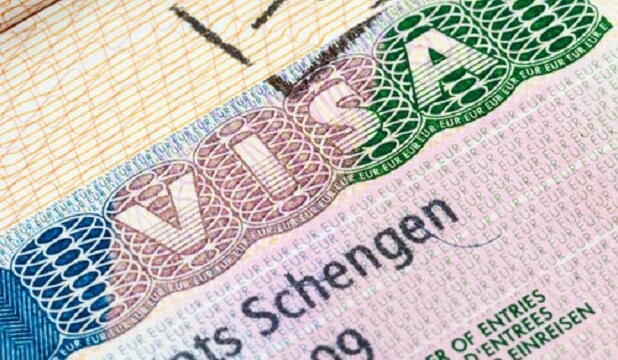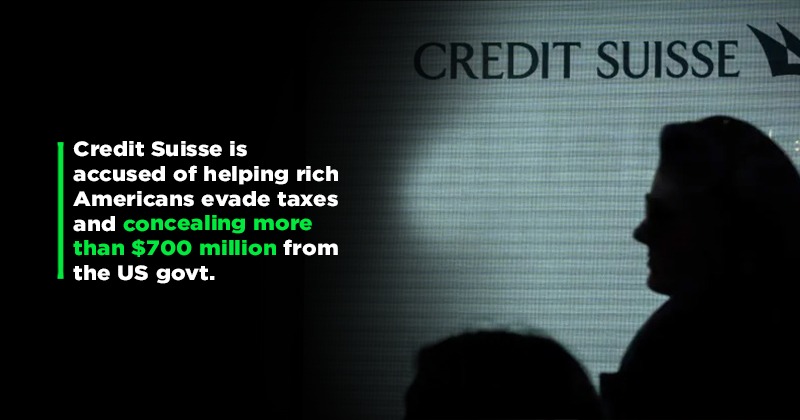Deconstructing The Double-Speak Around Trump's Transgender Military Ban

Table of Contents
The Official Justification: Combat Readiness and Military Effectiveness
The primary justification offered for Trump's Transgender Military Ban centered on maintaining combat readiness and military effectiveness. The administration argued that the presence of transgender service members would negatively impact unit cohesion, operational readiness, and increase healthcare costs.
Claims of Disruption and Cost
- Claim: The administration claimed that transgender service members would require extensive and costly medical care, placing an undue burden on military resources.
- Counter-argument: Studies conducted prior to the ban, and since its reversal, have consistently demonstrated that the healthcare costs associated with transgender service members are comparable to, or even less than, those of cisgender service members. These costs are often manageable within existing military healthcare systems.
- Claim: Concerns were raised regarding the potential disruption to unit cohesion and morale caused by the inclusion of transgender individuals.
- Counter-argument: Numerous testimonies from transgender service members and their colleagues refute this claim, highlighting the positive contributions and seamless integration of transgender individuals into military units. The focus on potential disruption often overshadowed the proven dedication and service of transgender personnel.
- Claim: The administration suggested that the presence of transgender service members might compromise combat readiness.
- Counter-argument: This assertion lacked concrete evidence and often relied on unsubstantiated generalizations. The ability of an individual to serve effectively in the military is determined by their qualifications, skills, and physical fitness, not their gender identity.
The "Don't Ask, Don't Tell" Precedent
The ban on transgender service evoked comparisons to the "Don't Ask, Don't Tell" (DADT) policy, which prohibited openly gay and lesbian individuals from serving in the military. While both policies aimed to restrict the service of certain groups, the justifications differed, highlighting inconsistencies in military policy.
- The repeal of DADT in 2011 demonstrated a shift towards inclusivity within the military. The subsequent ban on transgender service members represented a stark reversal of this progress, suggesting a lack of consistent principles guiding military policy decisions.
- Unlike DADT, which focused on sexual orientation and behavior, the ban on transgender service targeted gender identity itself. This distinction underscores the discriminatory nature of the ban, targeting individuals based on their innate characteristics rather than behavior.
- The inconsistencies between the justifications for DADT and the transgender ban exposed the inherent contradictions within the administration's approach to LGBTQ+ inclusion in the military.
The Double-Speak: Contradictions and Shifting Narratives
The justifications for Trump's Transgender Military Ban were often characterized by contradictory statements and shifting narratives from administration officials.
Contradictory Statements by Administration Officials
- Numerous instances emerged where administration officials offered conflicting statements about the purpose and impact of the ban. Some emphasized cost concerns, while others focused on combat readiness, revealing a lack of clear, consistent messaging.
- The shifting narratives also highlighted a lack of understanding of transgender identities and the experiences of transgender service members within the military. This lack of understanding fueled the misinformation and prejudice that underpinned the ban.
- The public pronouncements often contradicted expert opinions and available data, further underlining the lack of a credible basis for the policy.
Lack of Empirical Evidence
A significant flaw in the justifications for the ban was the absence of strong empirical evidence supporting the claims of negative impact. The arguments frequently relied on anecdotal evidence and unsubstantiated assertions.
- The administration failed to produce rigorous studies or data demonstrating that transgender service members negatively affected unit cohesion, combat readiness, or healthcare costs.
- The reliance on anecdotal evidence and fear-mongering tactics highlighted a lack of commitment to evidence-based policymaking.
- The absence of empirical data underscored the inherently discriminatory nature of the ban, driven by prejudice rather than objective assessment.
The Legal Challenges and Aftermath
Trump's Transgender Military Ban faced immediate and sustained legal challenges.
Court Cases and Legal Outcomes
- Numerous lawsuits were filed challenging the constitutionality of the ban, arguing that it violated principles of equal protection and due process.
- The courts consistently ruled against the ban, ultimately leading to its overturning and the reinstatement of transgender individuals in the military.
- The legal battles highlighted the fragility of discriminatory policies when challenged in the face of legal principles and established rights.
The Long-Term Impact on Transgender Service Members
The ban had a profound and lasting impact on transgender individuals who aspired to military service.
- Many transgender individuals were forced to leave their military careers, incurring significant emotional and psychological distress.
- The ban created a climate of fear and uncertainty, discouraging transgender individuals from seeking military careers.
- The policy resulted in a loss of talented and dedicated individuals who could have significantly contributed to the military.
Conclusion: Understanding the Legacy of Trump's Transgender Military Ban
Trump's Transgender Military Ban stands as a stark example of a policy driven by prejudice and misinformation, lacking empirical support and characterized by contradictory statements and shifting narratives. The legal challenges and eventual overturning of the ban highlight the importance of upholding constitutional principles and combating discrimination. The long-term impact on transgender service members, however, serves as a sobering reminder of the damage caused by discriminatory policies. Understanding the complexities of Trump's Transgender Military Ban requires ongoing critical analysis. Continue your research by exploring the resources available from organizations like the American Civil Liberties Union (ACLU) and the Human Rights Campaign (HRC) to foster a more inclusive and equitable future for all.

Featured Posts
-
 Uk Visa Restrictions Nigerians And Pakistanis Face Scrutiny
May 10, 2025
Uk Visa Restrictions Nigerians And Pakistanis Face Scrutiny
May 10, 2025 -
 Credit Suisse To Pay Up To 150 Million To Whistleblowers
May 10, 2025
Credit Suisse To Pay Up To 150 Million To Whistleblowers
May 10, 2025 -
 Leaked Photos Show Microsoft And Asus Xbox Handheld Console
May 10, 2025
Leaked Photos Show Microsoft And Asus Xbox Handheld Console
May 10, 2025 -
 Nyt Strands April 9 2025 Complete Guide To Solving The Puzzle
May 10, 2025
Nyt Strands April 9 2025 Complete Guide To Solving The Puzzle
May 10, 2025 -
 Mhmt Barys San Jyrman Ktabt Asmh Fy Sjlat Abtal Awrwba
May 10, 2025
Mhmt Barys San Jyrman Ktabt Asmh Fy Sjlat Abtal Awrwba
May 10, 2025
